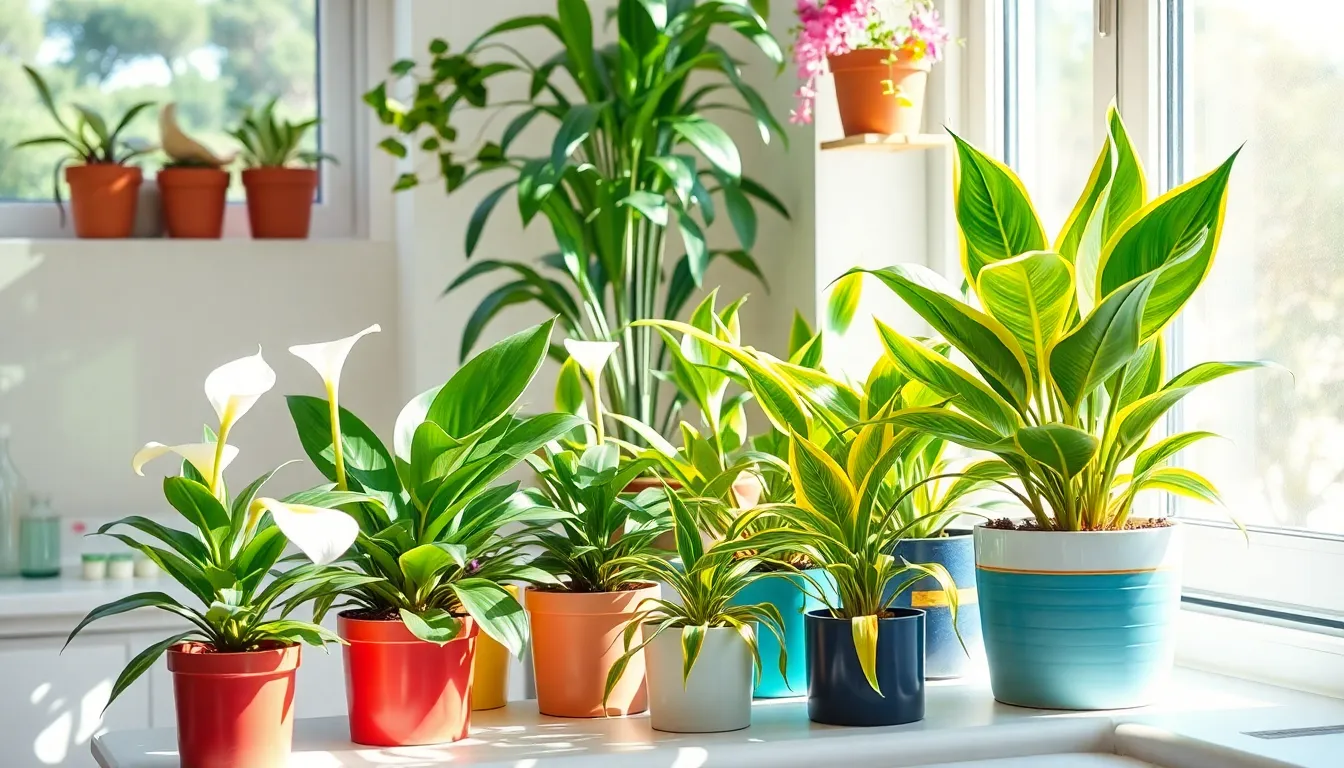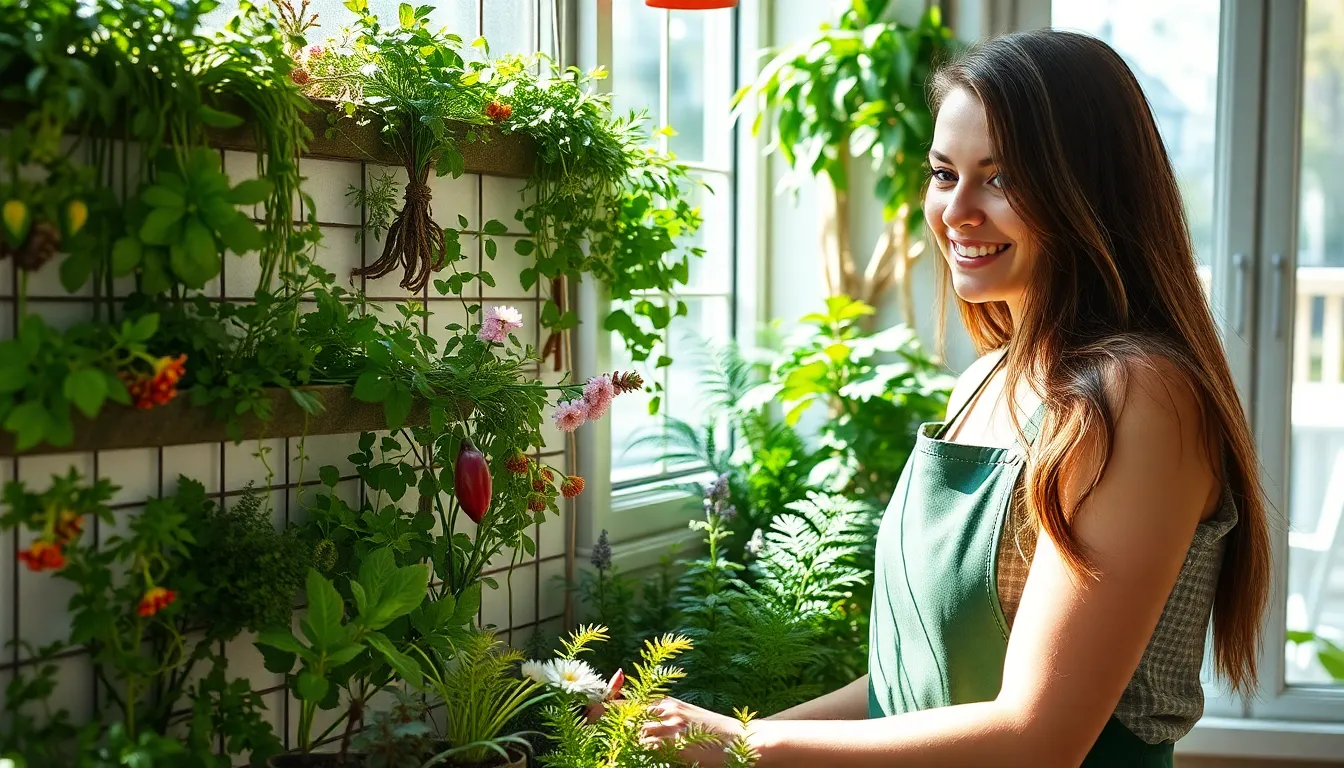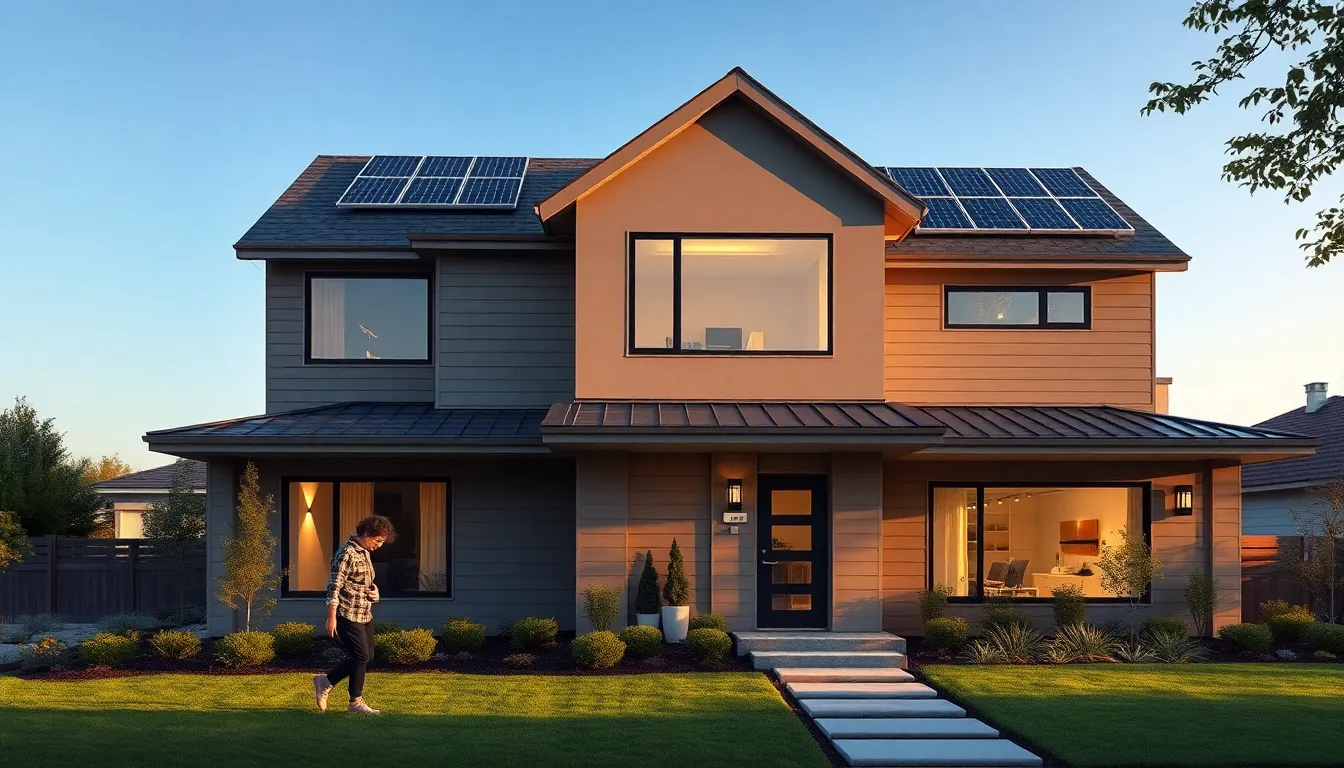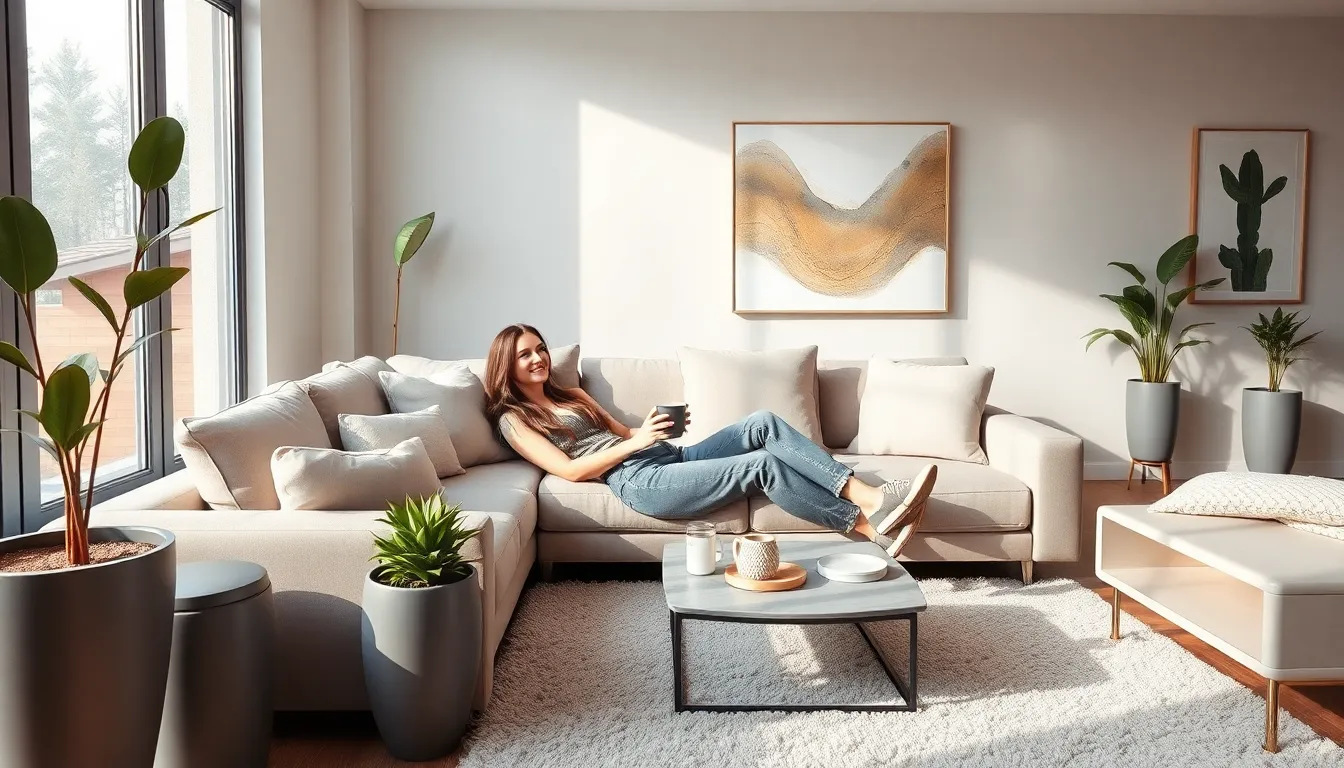Indoor gardening has surged in popularity as more people seek a slice of nature within their homes. With urban living often limiting outdoor space, creative indoor garden concepts are transforming small areas into lush, green retreats. These innovative ideas not only enhance aesthetics but also improve air quality and promote well-being.
From vertical gardens to hydroponic systems, the possibilities are endless. Homeowners and apartment dwellers alike are discovering how to cultivate herbs, flowers, and even vegetables indoors. Embracing these concepts can turn any space into a vibrant oasis, making it easier than ever to connect with nature, regardless of location.
Table of Contents
ToggleOverview of Indoor Garden Concepts
Indoor garden concepts offer innovative solutions for individuals seeking to incorporate greenery within their homes. They provide functional and aesthetic benefits in urban settings, where outdoor space may be limited. Key concepts include:
- Vertical Gardens: Vertical gardens utilize wall space for planting. They maximize limited floor areas while allowing diverse plant options. These gardens can feature edible plants like herbs and salad greens, enhancing both beauty and functionality.
- Hydroponic Systems: Hydroponics enables soil-less cultivation of plants using nutrient-rich water. It provides a controlled environment, facilitating faster growth and higher yields. Indoor hydroponic setups range from small countertop units to larger systems that occupy dedicated spaces.
- Terrariums: Terrariums are self-contained ecosystems in transparent containers. They create visually appealing displays of plants like succulents and ferns. These miniature gardens require minimal maintenance, making them perfect for those with busy lifestyles.
- Microgreens: Growing microgreens, such as radish, beet, and sunflower, offers a quick way to harvest nutritious greens. They thrive indoors in small trays and grow rapidly within 7 to 21 days. Microgreens provide flavorful additions to meals while utilizing limited space.
- Herb Gardens: Indoor herb gardens allow for year-round access to fresh culinary herbs. Common herbs like basil, cilantro, and thyme flourish on windowsills or in countertop planters. Their proximity to the kitchen enhances convenience for cooking and garnishing dishes.
These concepts make indoor gardening accessible for individuals regardless of space constraints. They foster not just an engaging hobby but also contribute to improved air quality and personal well-being.
Benefits of Indoor Gardening

Indoor gardening offers multiple advantages, improving living spaces while promoting health and wellness. It engages individuals in nurturing plants, enriching their environments.
Improved Air Quality
Indoor gardening significantly enhances air quality. Plants absorb carbon dioxide and release oxygen, contributing to a fresher atmosphere. Studies show that certain indoor plants can remove toxins like formaldehyde and benzene from the air. For example, Peace Lilies and Snake Plants excel at filtering indoor pollutants. By cultivating a variety of plants, individuals create a healthier living space, reducing the risk of respiratory issues.
Enhanced Aesthetics
Indoor gardening dramatically improves the visual appeal of spaces. Plants add vibrant colors and textures, making rooms feel more inviting. Vertical gardens provide dynamic wall features, while terrariums serve as captivating centerpieces. A well-designed indoor garden can complement any room’s decor, transforming bland areas into lively, attractive environments. Incorporating plants strategically not only beautifies the home but also creates a calming, serene atmosphere that enhances overall well-being.
Popular Indoor Garden Concepts
Indoor gardening offers versatile concepts that suit various lifestyles and spaces. These popular approaches maximize planting opportunities, even in limited areas.
Vertical Gardens
Vertical gardens optimize wall space by allowing plants to grow upwards rather than outwards. Utilizing trellises, wall-mounted planters, or pocket systems, these gardens accommodate herbs, succulents, and even flowering plants. Many vertical gardens include a drip irrigation system to ensure proper hydration, promoting healthy growth. This concept provides an attractive display while improving air quality, as plants filter indoor pollutants.
Hydroponic Systems
Hydroponic systems facilitate soil-less gardening, enabling faster and more efficient plant growth. By using nutrient-rich water solutions, indoor gardeners can cultivate a variety of plants, including leafy greens and herbs. Examples of hydroponic systems include Nutrient Film Technique (NFT) and Deep Water Culture (DWC). These systems allow for year-round cultivation, while also conserving water and reducing the risk of pests and soil-borne diseases.
Container Gardening
Container gardening allows individuals to grow plants in pots or containers, making it ideal for small spaces. This concept provides flexibility in plant selection, accommodating flowers, vegetables, and herbs. Containers can be arranged on windowsills, tabletops, or balconies, ensuring optimal sunlight exposure. Drainage holes in containers help prevent overwatering, promoting plant health and resilience. Such arrangements transform indoor spaces into lively gardens, enhancing aesthetics and fostering a connection with nature.
Choosing the Right Plants
Selecting suitable plants is crucial for a successful indoor garden. The choice depends on factors like light availability, maintenance level, and intended use.
Low-Maintenance Plants
Low-maintenance plants suit busy individuals or beginners. These plants require minimal care while thriving indoors. Popular options include:
- Snake Plant: Tolerates low light and infrequent watering; it also improves air quality.
- Pothos: Adapts well to different environments and propagates easily in water.
- ZZ Plant: Thrives in low light and withstands drought; ideal for neglectful caretakers.
- Spider Plant: Grows well in indirect light and produces “babies” for propagation.
These plants enhance aesthetics without demanding much attention.
Herbs and Edible Options
Indoor herb gardens provide fresh ingredients year-round. Common herbs suitable for indoor growth include:
- Basil: Prefers bright, indirect light and needs regular watering for optimal growth.
- Mint: Grows quickly and spreads; suitable for containers to manage its growth.
- Chives: Thrives in lower light and adds flavor to various dishes.
- Thyme: Requires moderate light and well-drained soil; adds flavor to culinary recipes.
Choosing herbs not only enhances meals but offers a rewarding gardening experience.
Designing Your Indoor Garden
Designing an indoor garden involves careful consideration of space and lighting to create a thriving environment for plants. The following sections detail essential factors to consider during the design process.
Space Considerations
Space availability dictates the type and scale of an indoor garden. Smaller rooms benefit from vertical gardens that utilize wall space effectively. Containers and shelves allow for creative arrangements, maximizing planting opportunities without overcrowding. Designing with modular furniture can create a flexible layout, easily accommodating changing needs. Consider multi-functional items, such as plant stands that double as decor, to enhance visual appeal while saving space. Effective planning ensures a liveable environment that doesn’t compromise mobility or design.
Lighting Requirements
Lighting plays a crucial role in indoor gardening success. Natural light sources vary based on location and window exposure, influencing plant selection. Space with southern exposure receives the most sunlight, suitable for light-demanding plants like tomatoes and peppers. Locations with limited natural light should incorporate grow lights to supplement daily requirements. Full-spectrum LED lights provide balanced wavelengths, promoting healthy growth. Position lights 12-24 inches above plants, adjusting as they grow. Monitoring light levels ensures an optimal setting for thriving gardens regardless of indoor conditions.
Indoor gardening offers a unique opportunity to bring nature into urban living spaces. With various concepts available, individuals can transform their homes into vibrant green sanctuaries. Whether it’s through vertical gardens or hydroponic systems, the possibilities are endless.
Choosing the right plants and understanding design elements can enhance the indoor gardening experience. This not only beautifies spaces but also promotes health and well-being. As more people embrace indoor gardening, they discover a fulfilling hobby that fosters a deeper connection with nature.



